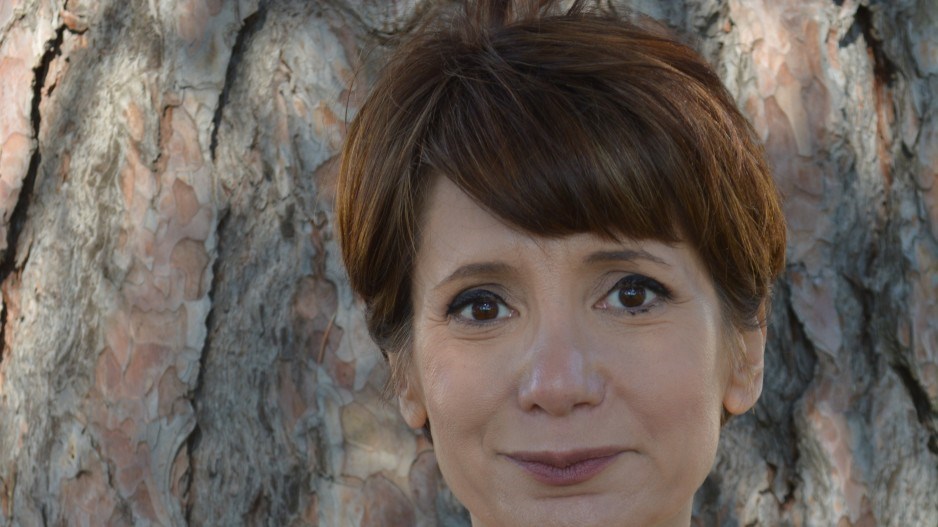Enhancing working forests and using more products from wood can play a critical role in climate change mitigation by sequestering carbon — provided those forests don’t go up in smoke or get chewed to death by bugs.
Given how much of Canada’s landscape remains forested, it can have a positive contribution to climate change mitigation through sustainable forestry, which is one of the reasons why the Committee on Forests and the Forest Industry (COFFI) from the United Nation’s Economic Commission for Europe (ECE) has convened their 76thsession in Vancouver last week.
It is the first time the committee has held a session outside of Europe. It is being held this week in conjunction with two other conferences — the Passive House Canada and Wood Solutions.
One of the committee’s actions this week was adopting the Vancouver Invitation on Forest Products for a Better Future proposal, which aims to “harness the environmental, economic and social benefits of sustainable forest management.”
The Vancouver initiative underscores the important role a sustainably managed forest industry can play in climate change mitigation, COFFI secretary Paola Deda told Business in Vancouver.
“There is this image of wood not being sustainable because it comes from cutting trees, and I think we have to go beyond that image, because we are not cutting trees and deforesting,” she said. “The idea is sustainable forest management. We are cutting trees that are that going to regrow. But the carbon is captured in the wood.
“I think this is what is very new about this document – that forest products are sustainable. If they come from sustainably managed forests, and if they follow some sustainability principles, then wood as a material and wood products – products in everyday life, from buildings to textiles – are more sustainable than other materials.”
While logging may look like deforestation to some, it’s not. Deforestation is when trees are cut down to make way for agriculture or development, and are never replanted.
A working forest is one in which trees that are cut down are replanted. Any product made from those trees sequesters carbon, at about one tonne per cubic metre of wood.
But when it comes to forests, the climate gods both giveth and taketh away.
On one hand, warmer temperatures and more carbon dioxide in the atmosphere has led to a worldwide “greening” over the past 35 years, according to NASA. That means some forests are growing, or regrowing at faster rates than if there were less CO2 in the atmosphere.
“There are areas across the world and in Canada where trees are growing faster and better as a result of warming and enhanced CO2,” Werner Kurz, senior research scientist at Natural Resources Canada’s Canadian Forest Service, one of the speakers at a plenary session Thursday, November 8, told BIV.
But a warming climate has also increased destruction of trees through pests and wildfire. Between 1990 and 2002, B.C.’s forests acted as a net carbon sink, Kurz said. But the mountain pine beetle infestation and wildfires has essentially erased all those gains since 2008, he said.
“Globally, forests have over the last decades taken up about 30 per cent of the CO2 emissions from humans,” Kurz said. “The big question is whether or not this sink can be sustained or even enhanced. We need to simultaneously reduce fossil fuel burning and increase sinks, and forests play a big role in that.”
In B.C., efforts to improve the carbon sink capacity of forests are underway, thanks to the $290 million Forest Carbon Initiative, being jointly funded by the B.C. and federal governments.
It includes replanting, rehabilitation and fertilization, both for working forests, and for forests that may never be cut – in provincial parks and reserves, for example.
Forestry as a climate change mitigation tool could pit environmentalists concerned about climate change against environmentalists concerned about biodiversity and conservation.
Conservationists argue that old mature forests should not be logged because they store such huge amounts of carbon. Others argue that, as long as the carbon remains sequestered in products like lumber, and as long as the trees are replanted, a younger working forest takes up more CO2 than a mature intact forest.
“One of the things that is absolutely clear is that an old forest with big trees contains, at the moment, more carbon than a young forest,” Kurz said. “But the young forest is more actively growing and removes more carbon from the atmosphere than the old forest.
“This is the part where there’s some debate. But the science clearly indicates that old forests are much weaker carbon sinks than young forests. And old forests tend to be more susceptible to insects, to drought, to fires, etcetera.
“That doesn’t mean we need to convert all forests into young forests. There are many reasons why we want to preserve old forests – as carbon stores, for biodiversity, for ecosystem resilience. But the argument that we preserve old forests to maintain a carbon sink is not a valid one.”
In addition to promoting sustainable forestry, Canada has been playing a role in promoting uses of wood products to replace more energy intensive materials. Tall wood buildings is one example.
Engineered wood products — some of which have been pioneered in Canada — are being used in tall building construction, replacing more energy intensive materials like concrete and steel. The tallest either built or under construction in the world include high-rises, from Quebec City to Vienna, that are 13 to 24 storeys in height.
It’s something Deda thinks Canada should be doing a lot more.
“My suggestion would be to use the Vancouver Invitation in your own country,” she said. “Because despite the amount of wood available to you, it’s not necessarily that development and construction and building is going in that direction. There is a lot of knowledge in Canada. There are pilot projects in Canada – there should be more.”



